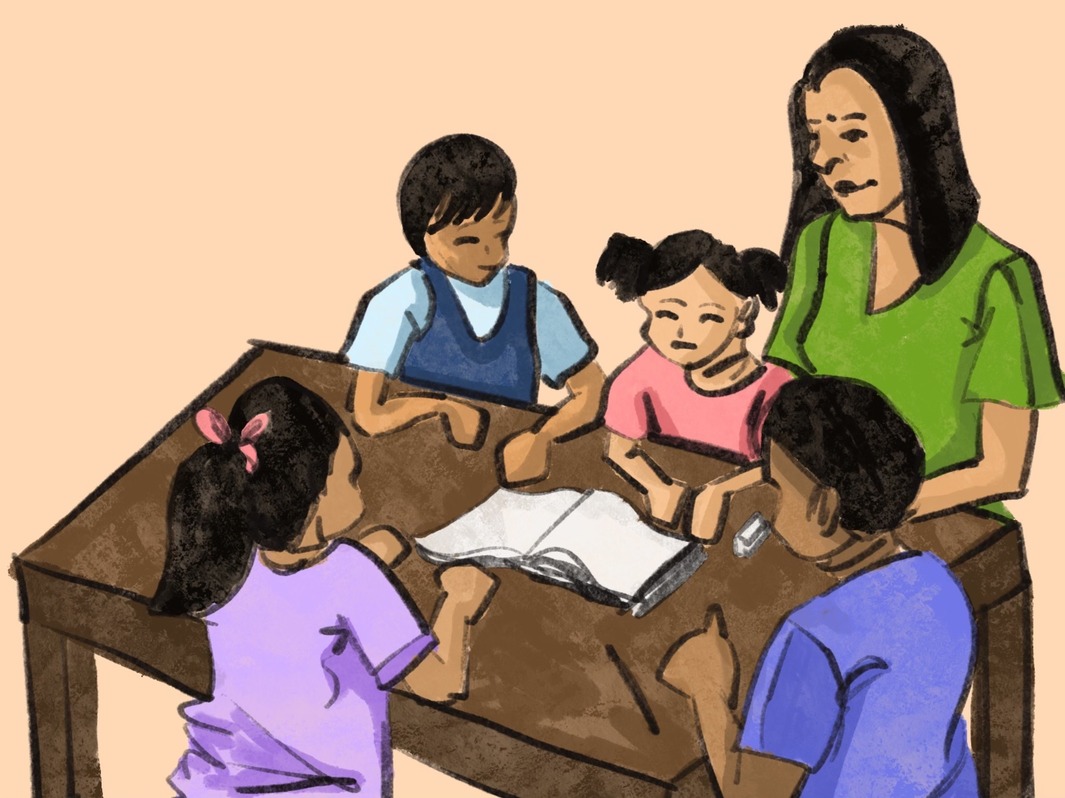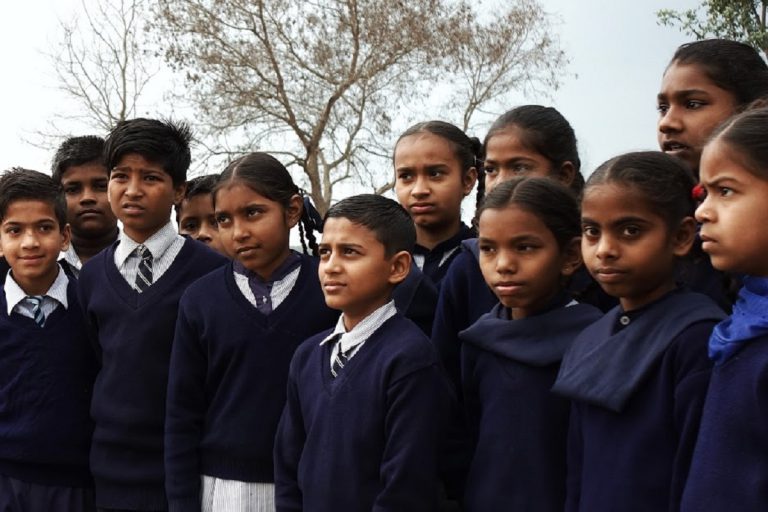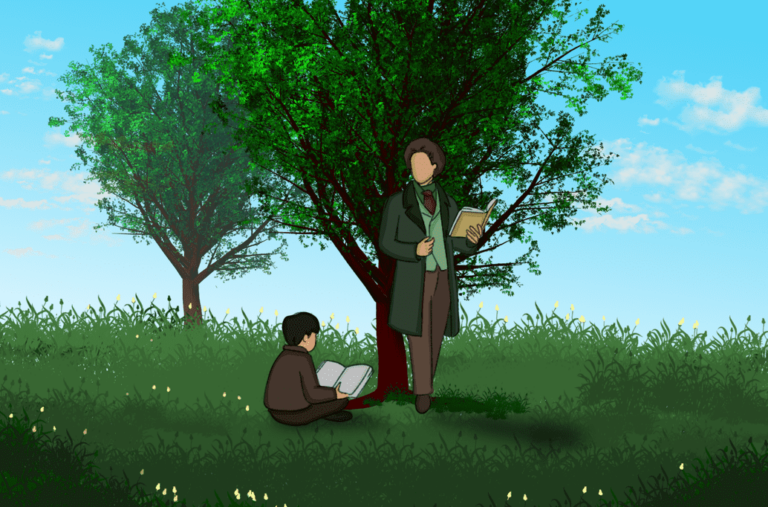Integrating Linguistic Diversity into Educational Practices
Swati Gupta is a passionate educator dedicated to transforming early childhood and primary education in India. With a vision to innovate learning experiences, she focuses on creating hybrid and inclusive models that empower young learners and teachers alike. Swati’s approach is rooted in a deep understanding of India’s diverse educational landscape, where she aims to address its complexities with creativity and inclusivity.
An avid believer in the power of art, Swati sees artistic expression as a universal language that fosters self-discovery and growth. Her dream is for every child to find their unique voice and explore their individual paths in life with confidence and purpose. Through her work, she aspires to nurture a generation of learners who can thrive in a world of possibilities while staying true to their authentic selves.
In an increasingly interconnected world linguistic diversity is a crucial aspect of cultural richness and identity. Language shapes our perceptions and ground our identities and influence our social behavior and interactions. For imagining a more equitable society a symbiotic relationship between linguistic diversity and educational practices becomes quite essential. This essay argues that promoting linguistic diversity within education can foster inclusivity, cultural awareness and social equity. Drawing on sociolinguistic insights and cognitive theories from foundational texts and self learning from experiences the discussion will explore how such a relationship can be cultivated through specific social, cultural and economic conditions with examples of challenges and approaches that support this vision.
Theoretical Foundations of Linguistic Diversity
Linguistic Relativity and Cultural Influence
The Sapir-Whorf Hypothesis or linguistic relativity as explored by Wardhaugh and Whorf underscores the idea that language shapes thought and perception. For instance, Whorf’s study of the Hopi language reveals that Hopi speakers experience time not in fixed segmented units but as an ongoing process. This alternative worldview challenges Western assumptions about time and illustrates how language can shape our perceptions. In a multicultural classroom embracing linguistic diversity allows students to encounter different cognitive frameworks. Students learning both English and a local Indigenous language might develop a broader understanding of time, space and relationships.
Research also indicates that bilingualism enhances cognitive flexibility. This is reflected in studies on Australian Indigenous groups who use cardinal directions (north, south, etc.) instead of egocentric terms like “left” or “right.” Exposure to such linguistic structures in school can open students to alternative worldviews and cultivate critical thinking skills. Recognizing linguistic diversity in education is thus not only about communication but also about exposing students to multiple lenses for interpreting reality, which can encourage empathy and cross-cultural understanding.
Language as Identity and Community
Dell Hymes highlights the importance of “ways of speaking,” emphasizing that language is deeply tied to identity and community. In the context of education, embracing students’ native dialects and languages can validate their cultural backgrounds which foster a sense of belonging. For example, in many Western countries students who speak African American Vernacular English (AAVE) may face stigma if their dialect is considered “incorrect.” Hymes suggests that valuing all forms of speech can mitigate such inequalities by legitimizing students’ linguistic identities within academic spaces.
Haugen also addresses how language policies often prioritize a single “standard” language, which can marginalize speakers of regional dialects or minority languages. By privileging one language, societies inadvertently reinforce social hierarchies and limit students’ engagement with their cultural heritage. Education systems that encourage multilingualism counter this trend by fostering respect for diverse linguistic backgrounds and reducing social inequality. Implementing bilingual programs or dialect-inclusive curricula, as seen in South Africa’s language policy supporting 11 official languages allows students to learn in their native language while gaining access to other languages which helps them to bridge the gap between academic success and cultural identity.
Despite being a culturally and linguistically rich country, India is still dominated by English Language and it is us who continue to make this language superior as compared to others because of which many dialects and languages are left unnoticed, unaccepted, unappreciated and often gets lost in the classrooms.
Integrating Linguistic Diversity
Multilingual Education Models
Multilingual and multicultural classrooms offer children a rich environment that enhances cognitive flexibility, problem-solving, and critical thinking. Exposure to multiple languages and cultures encourages students to view concepts from different perspectives, strengthening their ability to switch between cognitive frameworks, an essential skill known as cognitive flexibility. This diverse setting enables children to make connections between various languages, promoting metalinguistic awareness and improving memory, attention, and adaptability. In Indian classrooms, approaches such as translanguaging—where students fluidly shift between languages within a single lesson—can help reinforce understanding by connecting new knowledge with students’ native languages. Teachers can also use group activities that encourage students to share cultural and linguistic knowledge, helping peers learn from one another. Integrating local languages alongside English in content explanations and using culturally relevant examples can further aid comprehension and foster a sense of inclusion, ultimately creating a supportive and cognitively enriching environment for all learners.
Countries with multilingual education systems provide valuable examples of how linguistic diversity can enhance inclusivity. In India, the “three-language formula” encourages proficiency in a regional language, Hindi and English. Sridhar’s work on multilingualism underscores how this approach allows students to connect with their cultural roots while acquiring language skills that are economically valuable. This model ensures that students from various linguistic backgrounds have equal access to educational resources regardless of their native language. Similarly, in Canada the bilingual education system for English and French speakers promotes national unity and respects both linguistic communities.
Multilingual education fosters inclusivity by valuing students’ home languages as assets rather than barriers. In schools that teach languages such as Spanish, Mandarin, or Arabic alongside English, students develop pride in their heritage and are better prepared to navigate a globalized world. These programs show that when linguistic diversity is integrated thoughtfully, it can create educational environments that celebrate rather than suppress cultural plurality.
Incorporating Dialects and Vernaculars
Standardized language policies in schools often marginalize regional dialects and vernaculars. Haugen’s exploration of dialect and language standardization points out that dialects carry important cultural significance. Integrating dialects into the classroom—whether through literature, local storytelling or regional poetry helps students to see these forms as valuable cultural assets. The promotion of Hawaiian Creole or “Pidgin,” in Hawaiian schools where educators now incorporate it into teaching materials serves as an example of recognizing vernaculars. By respecting dialects educational systems can affirm students’ cultural identities and foster a sense of belonging.
In addition, incorporating local dialects addresses the educational disparities that arise when students are forced to learn solely in a standard language. For example, in parts of Nigeria, programs have included Yoruba and Hausa in classrooms alongside English. Students learn in their mother tongue first, gradually transitioning to English, which improves comprehension and retention rates. These dialect-friendly teaching models not only preserve linguistic diversity but also bridge gaps in academic performance among students from different linguistic backgrounds.
incorporating regional dialects and local languages into India’s educational framework will promote fairness by recognizing the linguistic variety that students naturally bring into the classroom. When instruction includes dialects and regional languages, students often experience a stronger connection to the material which enhances engagement and comprehension. This approach minimizes the social stigma linked to non-standard language varieties that help to close the gap between students’ native languages and the formal medium of instruction. Such inclusive practices validate students’ linguistic heritage fostering a greater sense of belonging. Effective strategies include translanguaging where students actively use multiple languages during learning, and designed multilingual activities to support teachers in using dialects constructively. Additionally, adjusting assessments to account for dialectal differences and providing teachers with training to use students’ native languages in lessons can further advance equal educational outcomes.
NEP 2020 also focuses on developing language skills using first language in early years by incorporating local and folk songs and stories and also advocates for creating spaces in the classrooms where they learn from each other’s culture and languages. When I used to teach language in 5th class, I had many children with diverse backgrounds. We used to do this simple activity daily where we used to take some words/greetings and children had to go and ask their family members how do we say that word in their local language and then next day we used to discuss it and write those words and display it on our class wall. It was a small exercise but quite fun. Children along with me learnt a lot about each other and felt much closer as a class.
Conditions for Universal Implementation
Social Conditions
Achieving a symbiotic relationship between linguistic diversity and education requires cultivating positive social attitudes toward multilingualism. Societies that value linguistic diversity are more likely to accept and support inclusive education policies. Hymes notes that societies with diverse “ways of speaking” often face resistance to linguistic inclusion due to social biases. Campaigns that promote language inclusivity, such as Spain’s regional language pride initiatives in Catalonia and the Basque Country, help foster respect for linguistic diversity.
Reducing linguistic prejudice involves educating communities about the cognitive and cultural benefits of multilingualism. Schools can play a role by organizing cultural events or language festivals where students share their heritage, helping communities see linguistic diversity as an asset rather than a division.
Cultural Conditions
Cultural acceptance of linguistic diversity is critical for a symbiotic educational model. As Wardhaugh points out, language is deeply intertwined with culture, acting as a vessel for values, traditions, and knowledge. Celebrating diverse languages within school curricula, such as by including works of literature from various linguistic communities, encourages students to appreciate different cultural perspectives. New Zealand’s approach to integrating Māori language and culture into school curricula, alongside English, is an example of how educational policies can help preserve and celebrate cultural diversity.
Instituting similar initiatives in other countries would involve creating curricula that include literature, music, and history from various linguistic backgrounds. For example, African countries with colonial histories have begun reintroducing indigenous languages into educational systems, helping to preserve cultural heritage and reconnect younger generations with their roots.
In India, for Early Years National Curriculum Framework Foundational Stage 2022 strongly emphasizes on the development domain of “Aesthetic and Cultural”. The activities in this domain such as creating your own beats, music, poems, singing folk songs, role play, etc., will help children to accept and appreciate each other’s cultural uniqueness in the classroom. For the upper grades textbooks all across the states are being revised in light of NEP 2020 AND NCF FS 2022 where the emphasis is to bring this diversity in text as well as assessment.
Economic Conditions
Embracing linguistic diversity in education also has economic benefits, as multilingualism is an asset in a globalized workforce. Cameron’s analysis of language commodification reveals that English has become an economic asset worldwide, but she warns against viewing it as the only valuable language. By teaching multiple languages, schools can equip students with skills that are increasingly relevant in international business, diplomacy, and tourism. Countries like Singapore, where students learn both English and Mandarin or Malay, prepare citizens for a global economy while respecting local culture.
Governments and private organizations could fund multilingual education as a long-term investment in workforce development. Initiatives that incentivize language learning, such as language certificates or scholarships for studying abroad, would encourage students to become proficient in multiple languages. This approach would help shift the narrative around multilingualism from being solely a cultural or social goal to one that holds tangible economic benefits.
Challenges and Solutions
Addressing the “Monolingual Standard” Bias
The dominance of monolingual and standardized language ideologies in education often hinders the incorporation of linguistic diversity. Fromkin’s work highlights how linguistic diversity is often disregarded in favor of a single, “correct” way of speaking. Overcoming this bias requires changes in teacher training and curriculum development, emphasizing cultural and linguistic competence. In Scotland, for example, the Scottish Government’s “1+2” language policy, which encourages students to learn their regional dialect and two additional languages, is a step toward breaking monolingual norms. Educators trained in cultural competence can validate students’ diverse linguistic backgrounds, making them feel valued in the academic setting.
In India there are many private schools where one needs to pay a fine if they communicate in any other language than English. This makes English superior and this is one of the reasons some children are left behind not because as they call it they are “ slow learners “ but because they are not able to make associations with their first language and other languages promoted in the classroom. We should also teach/include sign language for all children in the school. I believe this will create more inclusive spaces.
Teacher Training and Curriculum Development
Integrating linguistic diversity in education requires teacher training in multilingual instruction and cultural competence. Many teachers are unfamiliar with multilingual teaching methods, which can create obstacles for diverse classrooms. Professional development programs, similar to those in Finland’s multilingual regions, train teachers to address cultural and linguistic diversity through inclusive strategies, such as code-switching, cooperative learning, and community engagement. Teachers trained in these approaches can help normalize the presence of multiple languages, fostering inclusivity.
Balancing Language Preservation and Standardization
Standardization in education provides uniformity but can sometimes suppress linguistic diversity. Wardhaugh warns of the dangers of linguistic homogenization, which can erode cultural knowledge. A balanced approach would incorporate standardized curricula while offering elective courses in local languages. In Wales, students learn standardized Welsh in addition to English, helping preserve their language while accessing broader educational resources.
Schools could create elective programs for local languages, encouraging students to learn about their heritage without compromising academic performance in widely used languages. Such a model allows linguistic preservation alongside language standardization, achieving a balanced approach to educational equity.
Texts, assessments, and instructions should be available in local languages as well which will need more funds, in-depth teacher training, and a stronger emphasis on adapting such models. This will make the education system more accessible. There are many Children literature’s publishers who publish books in many languages such as Pratham Books, Eklavya etc.
Conclusion
Building a symbiotic relationship between linguistic diversity and education can promote an equitable, culturally aware society. Theories of linguistic relativity, identity, and community emphasize the profound ways language shapes thought, culture, and social connections. Practical approaches, such as multilingual education models and dialect-inclusive curricula, illustrate how these ideas can be applied to foster inclusivity. Social, cultural, and economic conditions that support linguistic diversity, from reducing biases to funding language programs, are essential for universal implementation. By recognizing linguistic diversity as an educational asset, societies can empower students to embrace their identities, broaden their perspectives, and thrive in a multicultural world.
Ultimately, this vision calls for an educational system that sees language as a bridge rather than a barrier, using linguistic diversity to cultivate empathy, enrich cultural understanding, and prepare students for global citizenship. Schools and communities that embrace such diversity will lead us toward a more just, equitable, and interconnected world.
References
- Cameron, D. (2012). The commodification of language: English as a global commodity. In Language and Communication in the Globalized World.
- Cameron, D. (2003). Gender and language ideology. In On Language and Sexual Politics. London: Routledge.
- Fishman, J. A. (Ed.). (1999). Language and ethnic identity (Vol. 2). Oxford University Press.
- Fromkin, V., & Rodman, R. (1998). What is language? In An Introduction to Language (6th ed., pp. 3-22). Harcourt Brace.
- Haugen, E. (1966). Dialect, language, nation. In J. B. Pride & J. Holmes (Eds.), Sociolinguistics (pp. 97-111). Penguin Books.
- Hymes, D. (1996). Speech and language: On the origins and foundations of inequality among speakers. In Ethnography, Linguistics, Narrative Inequality: Toward an Understanding of Voice (pp. 64-85). Taylor & Francis.
- McElvenny, J. (2015). Does language mirror the mind? An intellectual history of the Sapir-Whorf hypothesis. Aeon Essays.
- Sapir, E., & Whorf, B. L. (1956). The relation of habitual thought and behavior to language. In J. B. Carroll (Ed.), Language, Thought, and Reality: Selected Writings of Benjamin Lee Whorf (pp. 134-159). MIT Press.
- Spelke, E. S. (2009). What makes us smart? Core knowledge and natural language. In How Children Learn: The Nature and Nurture of Human Knowledge (pp. 13-28). Oxford University Press.
- Sridhar, K. K. (1996). Societal multilingualism. In Linguistic Diversity in South Asia. Springer.
- Wardhaugh, R. (2011). Words and culture. In An Introduction to Sociolinguistics (6th ed., pp. 220-241). Wiley-Blackwell.
- Whorf, B. L. (1950). An American Indian model of the universe. In Language, Thought, and Reality: Selected Writings of Benjamin Lee Whorf (pp. 57-64). MIT Press









Your article is such a thoughtful and inspiring piece! I love how you’ve highlighted the role of linguistic diversity in education and shown how it can transform classrooms into spaces of true inclusivity. The way you connected it with NEP 2020 makes it even more relatable and impactful.
This was such a joy to read, Swati! Keep inspiring with your amazing work.
@Manish @Sudhanshu @Neetu @Atul thankyou so much for reading!
@pulkit I am glad that real-life experiences helped you understand these themes. Thankyou so much!
Adding these examples could have given it more depth, and I will try to dive deep into these themes moving forward. Thank you so much, ma’am, for your valuable feedback.
Swati you have explained some of the basic tenets of sociolinguistics & multilingual education. However there is a lack of agreement on some of these for example the 3 language formula also is not recommended by all scholars for various reasons including that it tend to turn languages into school subjects. I enjoyed reading this piece & hope you develop it to a further depth.
I found this article to be a thoughtful exploration of integrating linguistic diversity in education. It effectively highlights how multilingualism and regional dialects can foster inclusivity, cultural awareness, and cognitive flexibility. The real-world examples were particularly impactful, making the argument even more compelling. Overall, I believe that this is a great read for any educators and policymakers looking to create more equitable and inclusive educational systems.
Wonderful and insightful article. The author seems to be well aware of topic and has penned out thoughts beautifully.
It is a very insightful article . i always feel it is important to learn atleast your local language and some international language. Being Multilingual or atleast bilingual really helps people in geling in multinational environment and locally too.
It’s high time that we talk about language bridge rather than language barriers. Good article.
Very interesting 👌